Louis Justement's Washington: Overview
Introduction Credits:
Jennifer Murck
Introduction Date:
Introduction Text:
Louis Justement was an influential architect in Washington, D.C., from the 1920s until his death in 1968. During that time he planned the construction of many buildings that Washingtonians recognize today, including the Longworth House Office Building, E. Barrett Prettyman United States Courthouse, Howard University Medical School and Sibley Hospital. In addition he was affiliated with several prominent organizations and served on a number of influential committees. He was a three-term president of the Washington Chapter of the American Institute of Architects and was Chairman of the AIA Committee on Urban Planning.
Throughout his career, Louis Justement was exposed to many of the problems inherent in designing for urban areas and to Washington, D.C. in particular. After World War II veterans moved to U.S. cities en masse only to find that there wasnít enough affordable housing. The lack of housing, and the fact that most houses available cost more than a middle class family could afford, encouraged Congress to discuss legislation that would provide for subsidized housing. This legislation established the Veterans Emergency Housing Program and was fiercely debated within Congress and within the American Institute of Architects. The argument for subsidized housing was premised on the insufficient supply of housing in relation to the sudden increase in demand. Those people arguing against subsidies claimed they were an inappropriate form of charity and threatened free enterprise. These arguments highlighted the role of government in housing and urban development.
In 1946 Louis Justement wrote New Cities for Old which used Washington, D.C. as the basis for a drastic plan of urban revitalization. In the book Justement advocated widespread demolition of slums in order to make way for beautiful neighborhoods. The book acted as the basis for a Southwest Washington redevelopment plan he co-authored with Chloethiel Smith in 1952. However, instead of going with Justementís plan, the D.C. government approved a redevelopment plan for Southwest Washington authored by William Zeckendorf, a New York City real estate developer. In order for slum clearance to proceed, and Southwest Washington, D.C., to be rebuilt, the city had to displace a large number of low income residents. The city government had to decide how to displace the residents and what role they would take in helping residence find new housing. Again, arguments as to the role of government in housing and urban development surfaced.
Slum clearance, and the displacing of residents from homes, has been a recurring issue in urban development. It was widely believed at the beginning of this century that row houses contributed to the development of slums, with alleyways in-between houses serving as havens for criminal behavior. In 1926 Louis Justement applied for, and received, a patent for a new type of apartment house that did away with these alleys. In order to receive the patent Justement had to prove that his invention was in fact a new and useful idea. He hoped that his invention would replace alleyways with garden, park-like settings. In 1936 Louis Justement designed Falkland Properties in Silver Spring, maryland. This property, based on his apartment house design, was one of the first large-scale housing project financed by the Federal Housing Authority.
Over the years city planners, engineers and architects have had to cooperate with city officials in planning how our urban areas will grow and develop. Debates invariably ensue as to what type and amount of involvement the government should have in urban planning. These debates are particularly intense in Washington, D.C. because the city serves as the nationís capitol and home of the federal government. Louis Justement, during his career as an architect in Washington, was exposed to and participated in many of these debates facing the city. By examining some of the documents found in his personal files, we can begin to explore the different roles the government has played in the development of our urban landscapes.

Document List
 | Photo - Longworth House Office Building (00/00/0000) Current Photo of the the Longworth House Office Building, designed by Allied Architects where Justement was a partner. |
 | Draft of Letter to the Commissioner of Patents from Unknown (00/00/0000) Letter to the Commissioner of Patents discussing the benefits and originality of Louis Justements apartment house design. |
 | Louis Justement letter to the Commissioner of Patents (10/07/1926) Letter from Louis Justement to the Commissioner of Patents arguing that his apartment house design is an original idea. |
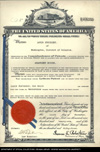 | Patent Certificate for Apartment Houses (11/09/1926) Patent certificate issued to Louis Justement for his garden-style apartment houses. |
 | Earl T. Heitschmidt Letter to Louis Justement (01/30/1947) Letter from Earl T. Heitschmidt to Louis Justement disagreeing with the way the proposed Federal Urban Land Agency would be administered. |
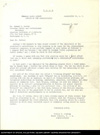 | Philip B. Fleming Letter to Edmund R. Purves (02/07/1947) Letter from Philip B. Fleming to Edmund R. Purves discussing the importance of collaboration between architects and engineers in city planning. He uses the organization of "Building Brigades" in the USSR as an example of how architects and engineers can work together. |
 | Edmund Purves Letter to Louis Justement (03/20/1947) Letter from Edmund Purves to Louis Justement asking him to reconsider legislation for Government ownership of land in metropolitan areas. |
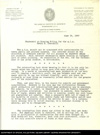 | Henry S. Churchill Memo on American Institute of Architect's Housing Policy (06/14/1947) Memo from Henry S. Churchill arguing that the American Institute of Architects should not get involved in a debate of private vs. public housing but should support an effor that provides for more adequate housing and encourages the redevelopment of cities. |
 | Louis Justement Letter to Albert J. Evers (11/03/1947) Letter from Louis Justement to Albert J. Evers in 1947 arguing that Veterans Emergency Housing is necessary. |
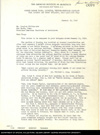 | George Cannon Young Letter to Douglas William Orr (01/19/1949) Letter from George Cannon Young to Douglas William Orr arguing why the American Institute of Architects should not support legislation for public housing. |
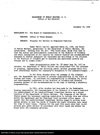 | Memo from the D.C. Department of Public Welfare Proposing Services for Displaced Families (01/00/1960) Memo from the Director of the D.C. Department of Public Welfare outlining a plan to assist families displaced from their housing by government agencies. |
 | Photo - E. Barrett Prettyman United States Courthouse (04/25/2006) Current Photo of the E. Barrett Prettyman Courthouse building designed by Louis Justement. |
 | Photo - Falkland Apartments (04/25/2006) Current photo of Falkland Apartments, designed by Louis Justement in 1936. One of the first large-scale housing projects for low-income residents financed by the Federal Housing Authority. |
